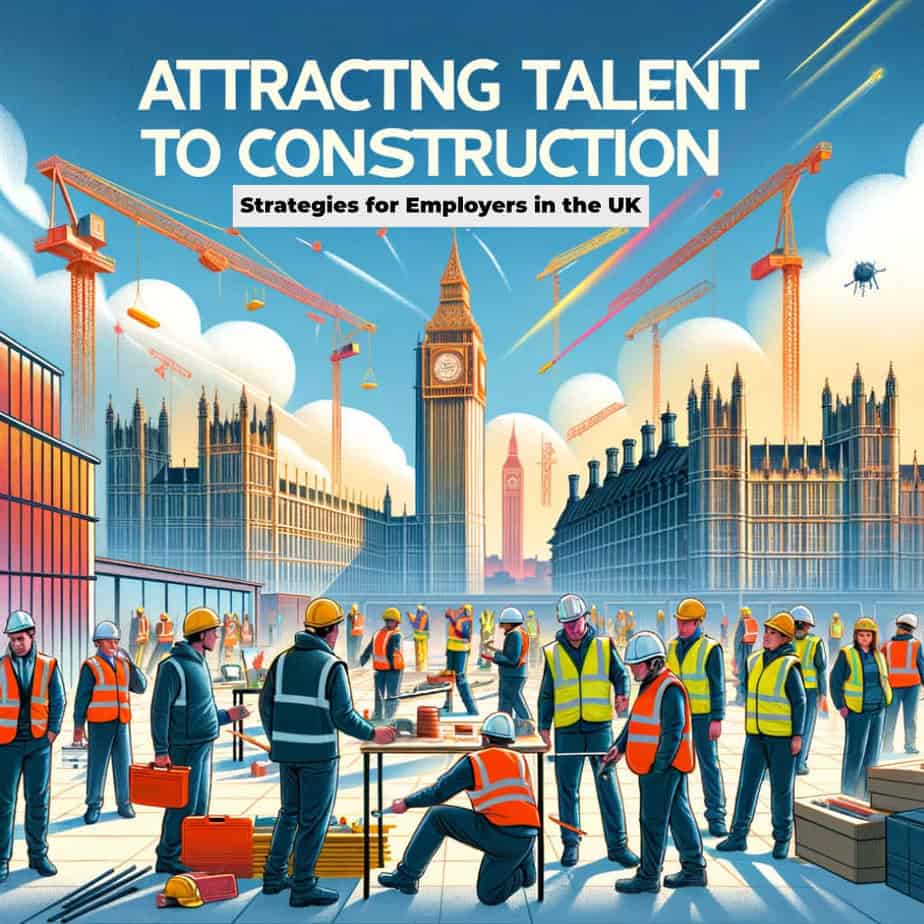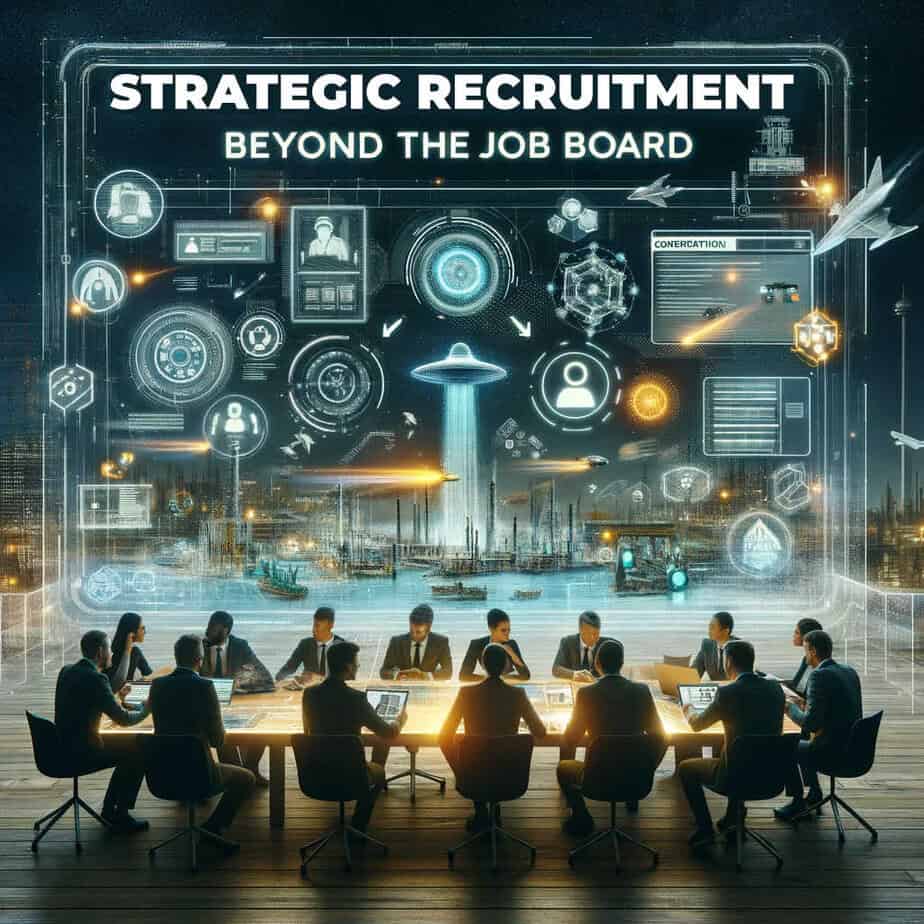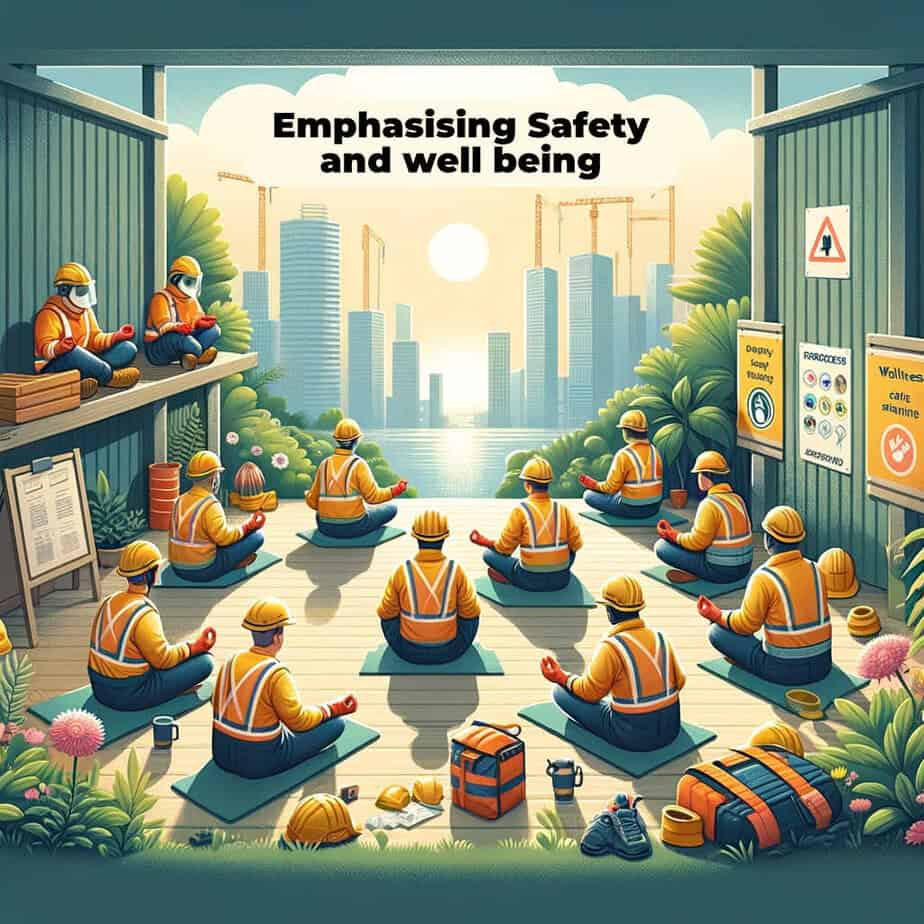
The Challenges of Attracting Talent to Construction
1. Impact of Post-Brexit Immigration Policies
Since the implementation of Brexit, attracting talent to construction in the UK has had a significant shift in its labour force dynamics. With tighter immigration policies, the once-reliable stream of skilled workers from EU countries has dwindled, posing a substantial challenge to employers. This shift necessitates a reevaluation of recruitment strategies, with a focus on nurturing domestic talent and exploring alternative immigration pathways for essential skills.
2. Addressing the Skills Gap and Aging Workforce
The skills shortage in the construction sector has been exacerbated by an ageing workforce approaching retirement. As experienced workers exit the industry, there’s a pressing need to fill the void with skilled professionals. Employers must invest in training programs, apprenticeships, and initiatives to attract younger generations to the construction trades. Collaborations with educational institutions and vocational training centres can facilitate the development of attracting talent to construction pipelines tailored to industry needs.
3. Overcoming Perceptions and Image Challenges
The perception of construction as physically demanding and needing more innovation presents a barrier to attracting talent to construction, especially young, tech-savvy individuals to the industry. To counter this stereotype, employers must showcase modern construction careers’ diverse and dynamic nature. Highlighting opportunities for creativity, problem-solving, and involvement in cutting-edge projects can make construction more appealing to a broader talent pool.
Understanding What Attracts Talent to the Construction Industry
1. Job Security and Career Advancement
In an uncertain economic climate, job security is a top priority for job seekers. Construction employers can enhance their attractiveness by offering stable employment opportunities and clear paths for career progression. Giving employees visibility into prospects and opportunities for upskilling and promotion fosters loyalty and commitment.
2. Work-Life Balance and Flexible Policies
Work-life balance is increasingly valued by professionals across industries, including construction. Employers can differentiate themselves by offering flexible working arrangements, such as remote work options, flexible hours, and compressed work weeks. These policies demonstrate an understanding of employees’ personal needs and responsibilities, ultimately contributing to higher job satisfaction and retention rates.
3. Innovation and Sustainability
Modern construction professionals are drawn to companies that embrace innovation and sustainable practices. Employers should showcase their commitment to technological advancements, such as adopting digital tools for project management and building information modelling (BIM). Additionally, a focus on sustainability, including green building techniques and environmentally friendly materials, resonates with candidates prioritising corporate social responsibility and environmental stewardship.

Strategic Recruitment: Beyond the Job Board
1. Partnerships with Educational Institutions
Collaborating with colleges, universities, and vocational schools is essential for establishing a steady pipeline of skilled talent. Employers can engage with educational institutions through guest lectures, workshops, and internship programs, providing students with hands-on experience and exposure to real-world construction projects. These partnerships benefit employers by connecting them with motivated candidates and contributing to the professional development of future industry professionals.
2. Utilising Social Media and Online Platforms
In today’s digital age, recruitment efforts must extend beyond traditional channels to reach a wider audience. Employers can leverage social media platforms, professional networking sites, and online forums frequented by construction professionals to promote job opportunities and engage with potential candidates. Active participation in industry-specific groups and discussions allows employers to showcase their company culture and values, attracting like-minded individuals who align with their mission.
3. Employee Referral Programs
Employee referrals are a valuable source of high-quality candidates, as existing employees can vouch for the company culture and work environment. Implementing an employee referral program incentivises staff to recommend qualified candidates from their networks, tapping into a pool of passive job seekers who may need to search for employment actively. By rewarding successful referrals, employers encourage employee engagement and foster a sense of ownership in the recruitment process.
Offering Competitive Compensation and Benefits
1. Comprehensive Benefits Packages
Employers should offer comprehensive benefits packages in addition to competitive salaries to attract and retain top talent. Health insurance, retirement savings plans, and wellness programs are essential components of a competitive benefits package that addresses employees’ physical and financial well-being. By investing in employee health and happiness, employers demonstrate their commitment to supporting staff members inside and outside the workplace.
2. Perks and Incentives
Beyond standard benefits, employers can differentiate themselves by offering unique perks and incentives that enhance the employee experience. Examples include flexible work arrangements, paid time off for volunteer activities, professional development stipends, and performance-based bonuses. These perks attract prospective employees and contribute to employee satisfaction and engagement, ultimately leading to higher productivity and retention.
Investing in Employee Development and Career Growth
1. Training and Certification Programs
Providing ongoing training and skill development opportunities is crucial for attracting ambitious professionals committed to advancing their careers. Employers should offer access to industry-specific certification programs, workshops, and continuing education courses to help employees stay abreast of the latest developments and best practices in construction. Investing in employee development not only enhances individual skills but also strengthens the overall capabilities of the workforce.
2. Clear Career Progression Paths
Employees are more likely to remain with a company that offers opportunities for advancement and career growth. Employers should establish clear career progression paths that outline potential career trajectories within the organisation. Regular performance evaluations and goal-setting discussions enable employees to track their progress and take proactive steps toward achieving their career objectives. By fostering a continuous learning and development culture, employers demonstrate their commitment to supporting employees’ long-term success.

Emphasising Safety and Well-being
1. Compliance with Health and Safety Regulations
Ensuring a safe and healthy work environment is paramount in the construction industry, where employees face inherent risks and hazards. Employers must prioritise compliance with health and safety regulations and invest in robust safety protocols and training programs. Regular safety inspections, hazard assessments, and emergency preparedness drills help mitigate risks and prevent accidents, protecting employees and the company’s reputation.
2. Promoting Mental Health Awareness
In addition to physical safety, employers should address the mental well-being of their employees, recognising the unique stressors and challenges associated with working in construction. Implementing mental health awareness programs, providing access to counselling services, and promoting work-life balance initiatives contribute to a supportive work environment where employees feel valued and supported. Employers can foster a culture of openness and empathy by normalising conversations about mental health and destigmatising seeking help.
Building a Positive Company Culture
1. Diversity and Inclusion Initiatives
Diversity and inclusion are fundamental pillars of a positive company culture, fostering creativity, innovation, and collaboration. Employers should implement policies and initiatives that promote diversity at all levels of the organisation, from recruitment and hiring practices to leadership development and employee resource groups. Creating a workplace where employees feel respected, empowered, and valued for their unique perspectives and contributions enhances morale and fosters a sense of belonging.
2. Transparency and Communication
Open communication and transparency are essential for building trust and fostering a positive work environment. Employers should regularly communicate with employees about company goals, priorities, and challenges, soliciting feedback and input to